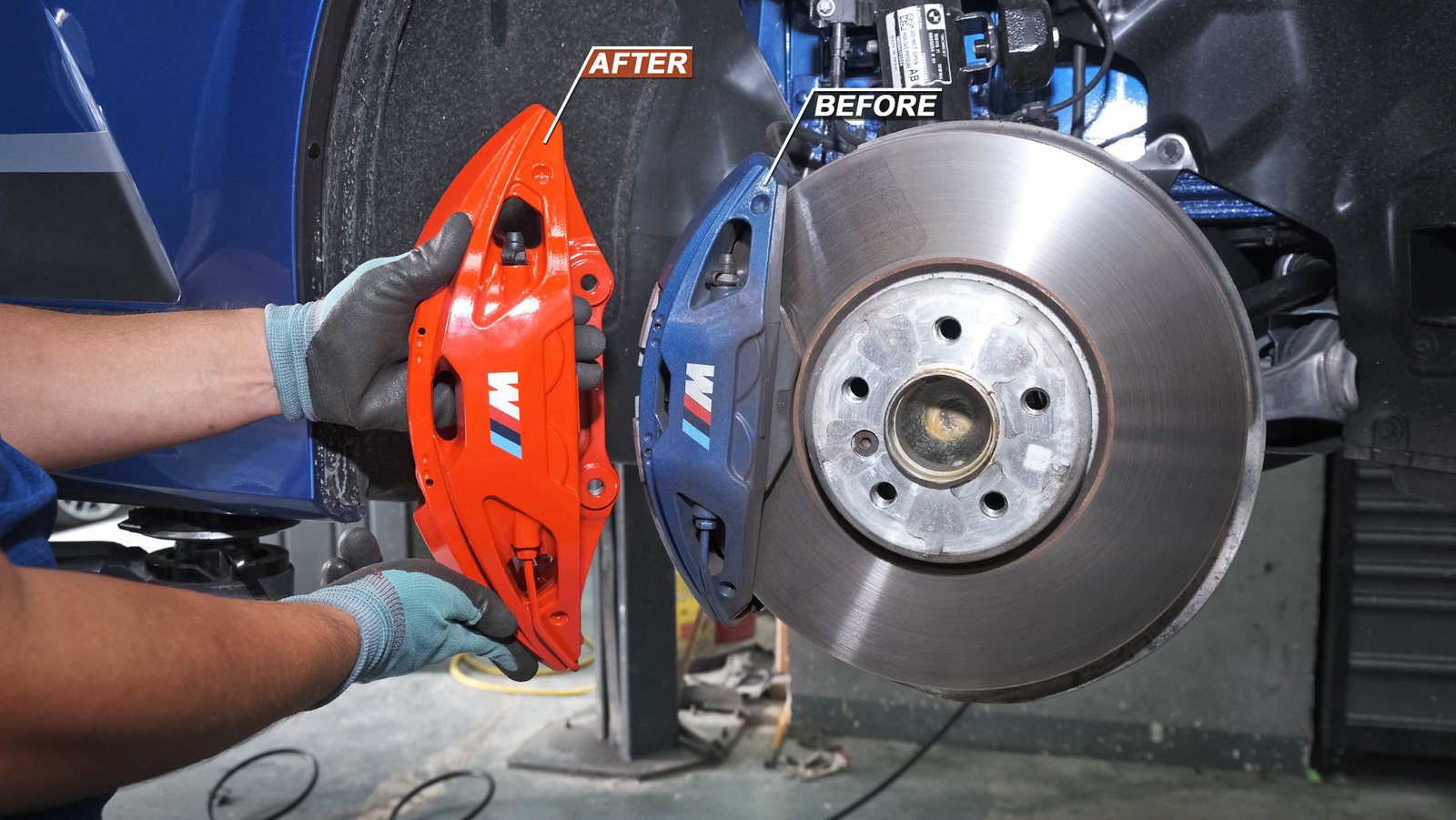- Hours Of Operation:Mon-Friday 8am - 6pm
- Towing Service: Open 24/7

One of the most uncomfortable experiences a driver can have is a spongy brake pedal, especially when one is stuck in traffic or descending a steep hill. So, understanding how to bleed brakes is necessary if you want your car’s braking system to perform better. Bleeding brakes are something a basic weekend mechanic can do, and doing so can significantly improve safety while driving.
Before we roll up our sleeves, let’s define what brake bleeding is. Over time, air can seep into your brake lines. In comparison to brake fluid, air is very easy to compress, and that wreaks havoc on the hydraulic pressure of your system. What you get as a result is a mushy brake pedal that has an unideal response time when attempting to stop.
Puncturing air from a system results in brake fluid replacing air space. Post-removal of air, the brakes will undoubtedly respond much more efficiently and quickly.
| Symptom | What It Means |
| Soft or spongy brake pedal | Air in the brake lines |
| The pedal sinks to the floor | Possible fluid leak or air in the system |
| Delayed braking response | Poor hydraulic pressure |
| Recent brake part replacements | Air introduced during installation |
| Old or dirty brake fluid | Needs a full system bleed |
There are a few telltale signs that it might be time to bleed your brakes:
Bleeding brakes are also essential after major repairs. It ensures no air remains in the system and keeps everything functioning at peak performance.
Let’s go over the basic tools you’ll need to bleed your brakes at home:
Once you’ve gathered everything, park your car on a level surface, turn off the engine, and engage the parking brake.
Here’s a simple walkthrough to help you do it safely and efficiently.
Open the hood and locate the brake master cylinder reservoir. If the fluid level is low, top it off with fresh brake fluid. Never let it run dry during bleeding, it’ll suck in air and undo all your hard work.
Use your jack to lift the car and support it securely on jack stands. Never crawl under a car supported only by a jack. Remove all four wheels so you have access to each brake caliper.
Each wheel will have a bleeder screw on the brake caliper (or wheel cylinder if you have drum brakes). Wipe the area clean to avoid contamination. Start with the wheel farthest from the master cylinder; usually the passenger-side rear. The order typically goes like this:
Place one end of the clear plastic hose on the bleeder screw and the other end into your catch container. Make sure the hose is secure and submerged in brake fluid to prevent air from being sucked back into the line.
Ask your friend to get in the driver’s seat. They’ll press the brake pedal several times and hold it down. While they hold, you open the bleeder screw slightly. You’ll see fluid and air bubbles travel down the house.
Once the flow stops or becomes bubble-free, tighten the screw before your helper releases the brake pedal. Repeat this “pump, hold, bleed” process 3–5 times per wheel. After every wheel, check and refill the master cylinder reservoir so it never drops too low.
Once all wheels are bled and you’ve topped off the brake fluid, reinstall the wheels and lower the car. Take it for a slow test drive in a safe area to make sure the pedal feels firm and responsive.
If the pedal still feels soft, you may need to repeat the process or check for leaks in the brake lines.
While bleeding your brakes can give your system a much-needed refresh, don’t mistake it as a fix for deeper issues. If issues persist and are recurrent, then it might be worth it to look into it deeply.
As an example, one of the most common signs of worn brake pads is an exposed and audible sound that squeaks with a high pitch along with a low shrilling noise when braking. If your pads are too thin, no amount of bleeding will restore braking power. Whenever you do any work on brakes, always check the pads, rotors, and calipers.
With the example given above, doing it yourself has as many rewarding opportunities as it sounds, but in fact, bleeding brakes is a task that requires great precision and needs to be approached meticulously. In case of any doubts, it’s suggested to reach out and take the car to a brake repair mechanic when dealing with faulty brakes. When components like master cylinders or brake line leaks become complex, then professionals come equipped with tools and can easily deal with more challenging issues.
Not all brake issues are related to air. A draining brake pedal suspected to sink to the floor after being bled indicates worn-out components. For example, it might, along with a hidden leak, be considered a failing master cylinder.
Scheduled vehicle inspections can help in avoiding improper brake function and brake system failures. Proper Routine Checkups involve checking fluids and brake pads as well as examining rotors and brake lines are very important a in timely manner
Car inspection reminders should not come to you with failure. It’s important to schedule servicing, especially for long drives as well as winter weather.
Your brakes’ overall potential could be greatly affected by the tires of your vehicle. Replacing brake pads or pads themselves will not yield any benefits when brakes are bled and tires are not in the right condition.
Frequent trips to a trusted tire shop will enable you to have peace of mind knowing that your tires are in excellent condition. Aside from the above, the professional shop solves your concerns regarding brakes and will perform inspections for you as well.
The knowledge of bleeding brakes is highly advantageous financially and in terms of having control of the vehicle’s safety features. With the right tools and patience, you will end up being confident while on the road due to improved brake performance.
Vehicle safety starts with effective brakes, and they should be checked regularly. Look after fluid levels, listen to any unusual sounds, and if something feels wrong do not hesitate to seek professional help. Your vehicle will remain in good working order with some preventative maintenance and attention to detail.
Event Highlights:
Bring your best car and your A-game!
